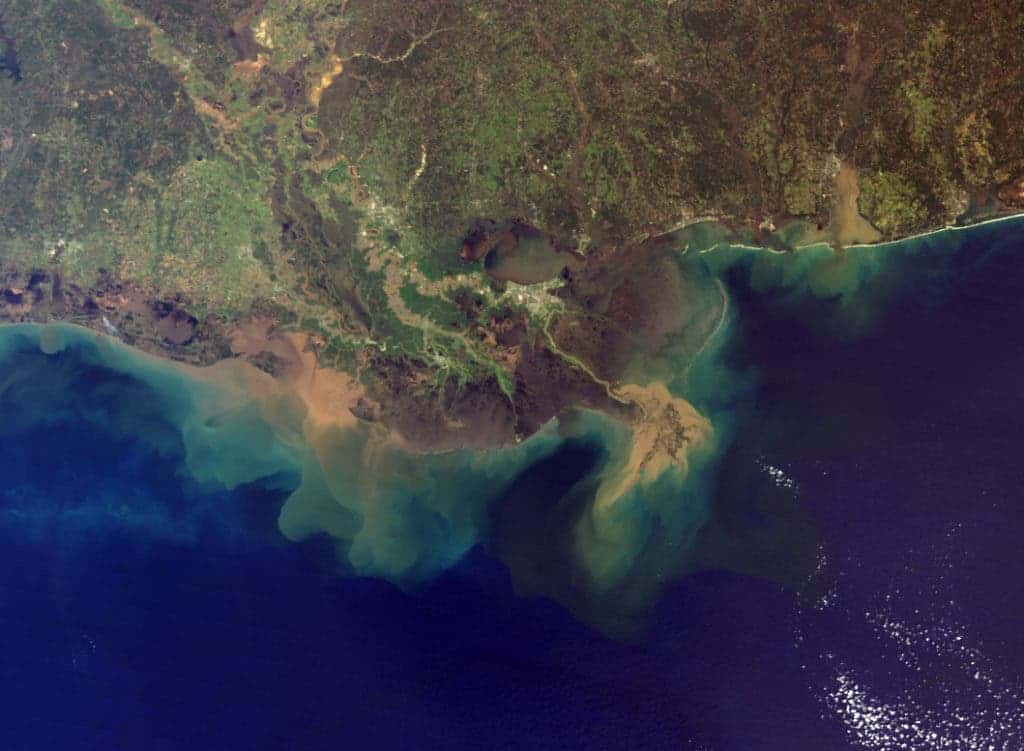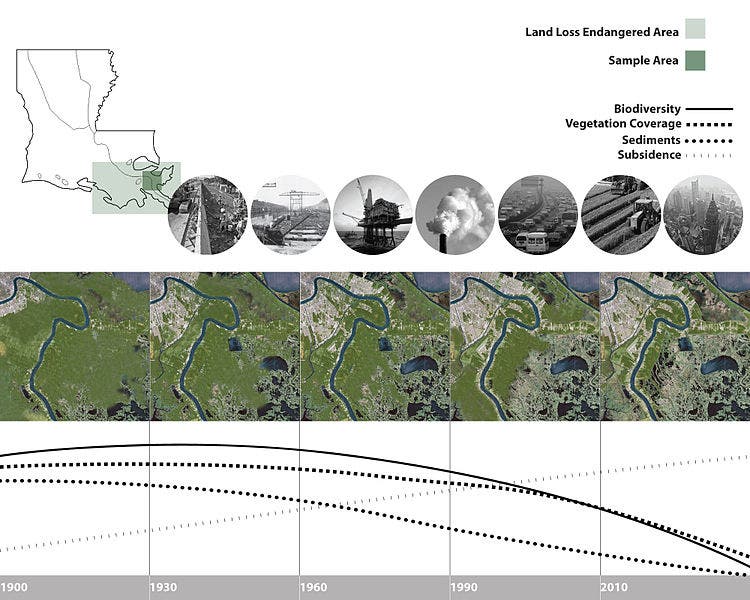“Coastal Louisiana has experienced catastrophic rates of wetland loss over the past century, equivalent in area to the state of Delaware” — that’s not something you want to see, but that’s the intro of a new study published by the Geological Society of America.

Jaap Nienhuis, a researcher from Tulane University, worked with colleagues to see just how fast Louisiana’s shoreline is moving down. They found that the coast is sinking at a rate of 9 millimeters per year (with a margin of error of 1 millimeter) — that’s 50 percent faster than expected by previous estimated. The rate isn’t uniform; some areas, such as the Mississippi River south of New Orleans, exhibit a sinking rate of 12 mm per year. But it gets even worse.
The study only analyzes the subsidence of the coast and ignores the effect of global warming and rising sea levels, estimated at 3 mm / year. Add the two together, and Louisiana is sinking by 12 mm every year. The problem is also associated with coastal erosion to make Louisiana one of the most environmentally threatened US states.
While it might not seem like much, this sinking is a significant driver of habitat destruction for wetland areas, which are already highly at risk due to climate change and soil erosion. Over the past 50 years, Louisiana has lost wetland area enough to cover the state of Delaware. In the future, it could get even worse.
“Low-elevation coastal zones (LECZs) are among the most vulnerable landscapes within the context of climate-driven accelerated sea-level rise, often exacerbated by other human impacts as well as high subsidence rates,” researchers write.
“Land subsidence in the absence of rapid accretion is one of the key drivers of wetland loss. Accurate subsidence data should therefore form the basis for estimates of and adaptations to Louisiana’s future.”

The main cause for this subsidence is the sedimentary deposition. Sometimes, rivers bring sediment to the coast — and they bring so much of it, that the coast actually starts to sink beneath its own weight. But sediments aren’t the only thing causing this effect — global warming is too. Particularly, global warming at the poles.
How could global warming at the poles cause coast subsidence in Louisiana?
Perfectly valid question.
Nienhuis and his colleagues planted anchors at different depths and charted their rise or fall using high-precision GPS. They found significant sinking at 50 feet deep (15 meters). They believe this to be evidence of the so-called continental “hinge effect” caused by the rising of the Arctic. As the Arctic rises, other parts of the globe are pushed downwards, like a hinge. Why is the Arctic rising? Because as ice melts, the weight on the ice caps is being lifted — this is once again evidence of the truly global and often unexpected consequences of climate change.
Since the environment is tightly connected with the economy, this process of subsidence (especially combined with the erosion) can cause assive economic damage. Commercial fishing in Louisiana accounts for more than 300 million dollars of the state’s economy, with more than 70% of that revenue represented by species such as shrimp, oysters and blue crabs that count on the coastal wetlands as a nursery for their young. As the wetlands suffer, so too do the people. More and more households and even communities are relocating further inland. Wetlands also provide a myriad of environmental services including resting areas for migratory species, carbon storage, and water filtration. It’s hard to put a figure on those services, but their importance is undeniable.
Jaap H. Nienhuis, Torbjörn E. Törnqvist, Krista L. Jankowski, Anjali M. Fernandes, Molly E. Keogh — A New Subsidence Map for Coastal Louisiana.


